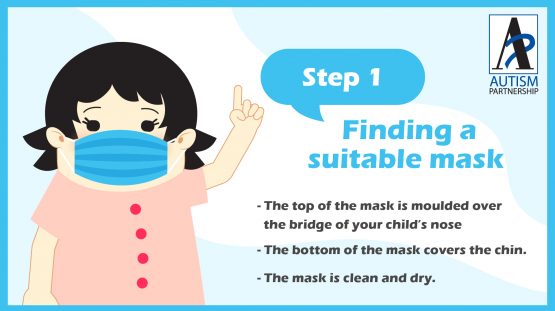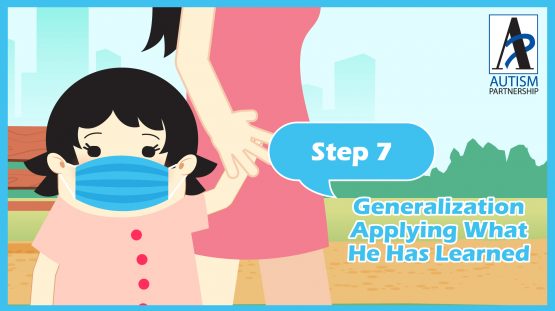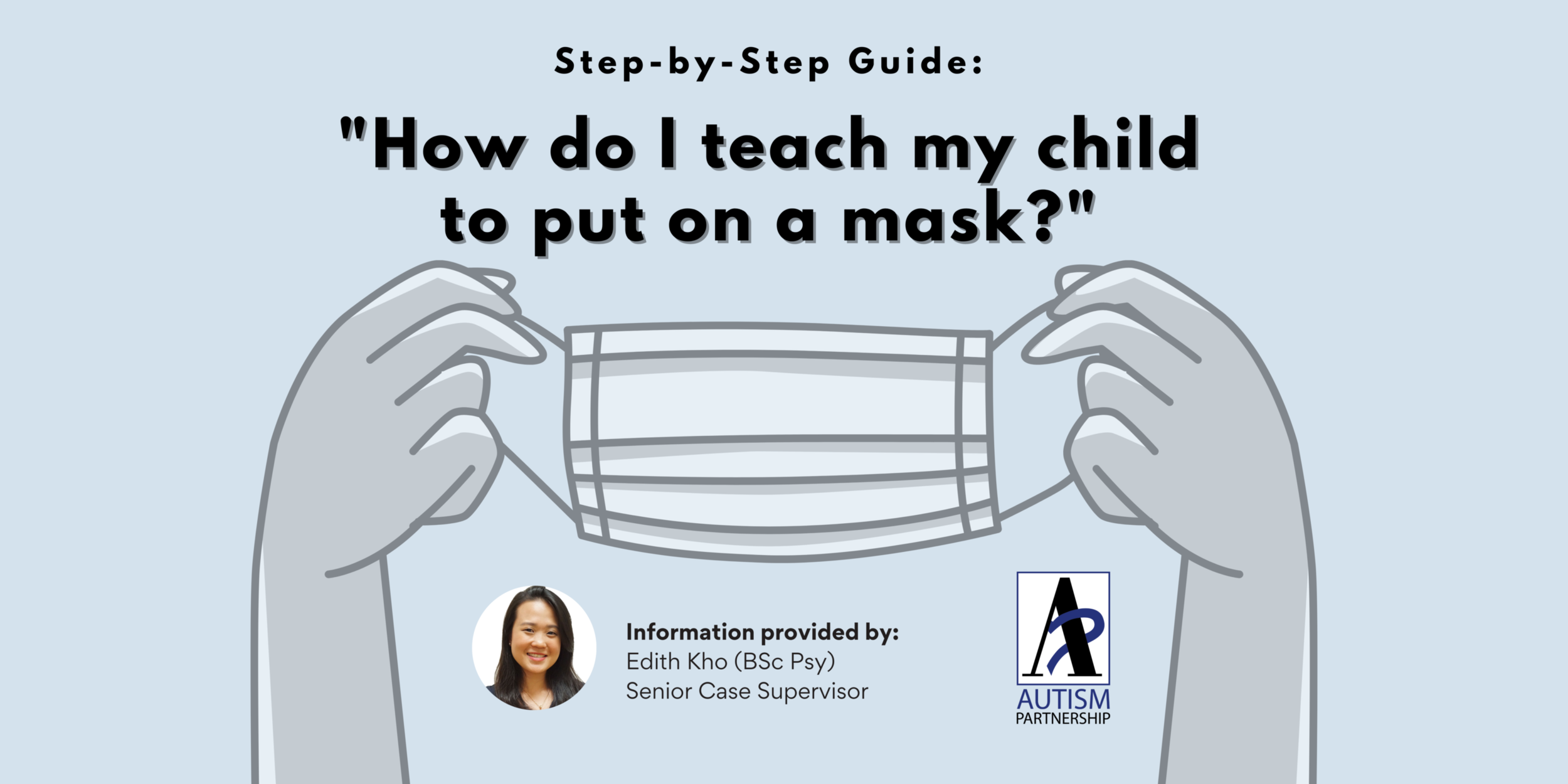In light of the ongoing spread of the novel coronavirus (COVID-19), it is crucial to take the necessary precautions to protect children and loved ones. One way that we can accomplish this is to have your child wear a mask when going outside in public or when feeling unwell.
It can be hard to make your child put on a mask if he or she is not used to wearing one. He or she may reject, resist, or in some cases completely refuse to wear one. This can be a very stressful experience for the parent or caregiver.
In order to ensure that your mask-wearing experience with your child will be positive, our Senior Case Supervisor, Edith Kho, has created this simple step-by-step guide. Getting your child* to wear a mask will protect him or her not only from infectious germs and illness but also from the occasional haze that is prevalent in Singapore.
*For children under the age of 3 years old, it is not recommended to wear a face mask as the use of a mask can increase resistance to breathing, causing hypoventilation (Mount Elizabeth, 2020).
Getting your child to put on a mask for the first-time:
In the video (filmed before the Circuit Breaker was implemented) you can see Jamie, one of our students, refusing to wear a mask.
While he exhibited some non-compliant behaviors, he was able to communicate and voice his dislike by saying, ‘I don’t want!”. This is a communication skill that was taught to him by his therapists previously.

Step 1: Finding a suitable mask
First, you need to find a mask that will fit your child and is recommended and approved. To ensure the mask’s effectiveness in reducing droplets and transmission, make sure that:
- The top of the mask is moulded over the bridge of your child’s nose
- The bottom of the mask covers the chin
- The mask is clean and dry
Step 2: Presentation of mask
Once you have selected the right mask for your child, the next step is to introduce him or her to it. As seen from Jamie's response in the previous video, he does not like it. This could be the same for your child and many children.
Your first objective as a parent is to ensure that your child is okay and calm when the mask is introduced to him. And if he or she is calm, we want to praise and reward him or her for that good behavior.
The video above shows Jamie not being asked to put on the mask immediately. Instead, his therapist is telling him that he needs to do so before he goes outside. Once Jamie was calm, he was rewarded. This shows that this is the right thing to do.
Step 3: Holding up the mask closer to the face and using a timer to indicate the duration
The mask can be gradually brought closer to Jamie's face now that he is calm. A timer was brought in at this point so that Jamie knows how long he has to keep the mask on his face. You can simply hold the mask closer to your child's face and countdown verbally for a start. A timer is not necessary. Every child is different; for some children, it may not be necessary. But a timer works for Jamie as he has been exposed to it.
Step 4: Wearing the mask
Once Jamie is calm and at ease with the mask near his face, it is time for Jamie to put the mask on. To make the experience as positive as possible for Jamie, the mask is only worn for a brief period of time at first. It's best to do the same for your child. A prolonged duration may result in a less-than-ideal experience.
Step 5: Wearing and increasing the duration that he keeps the mask on
Now that Jamie can tolerate putting on a mask, we will begin to practice with him keeping it on for a longer duration. As a parent or caregiver, you should gradually increase the duration to make your children feel successful. At the same time, rewards and encouragement should also be given when the right behaviors are shown.
Step 6: Incorporate an activity for your child while he has his mask on
Jamie is now comfortable wearing his mask so his therapist has introduced an activity that he can participate in while wearing it. The goal is for him to be engaged in an activity while wearing his mask. At home, we suggest trying it out with an activity that your child enjoys.

Step 7: Generalization - Applying what he has learned
Finally, generalization is applying what your child has learned. Each time a new skill is learned, it must be applied in different settings and with different people. For instance, at home, at school, or in his or her community, with friends and family members.
The generalization of your child’s skills is accomplished when he or she is able to wear in different locations, such as at home, in school, in the community, and/or even getting someone else who has not practised with your children before to get them to wear a mask.
Frequently Asked Questions (FAQ):
1. What can I use if I do not have a timer on the iPad?
You may use a phone/cooking timer or any visual timer.
2. Do I have to use a timer all the time?
No. The timer is only used at the beginning to remind your child how long he or she must keep his or her mask on.
The visual timer can be gradually removed by a process called “prompt fading”. A good way to do this is by placing the visual timer face down so your child doesn't see it and by muting the sound so that your child won't hear it.
“Prompt fading” is the process of gradually removing the prompts (the timer), that has been accompanied by instruction (wearing the mask), allowing students to perform independently correctly (wearing the mask without the timer).




